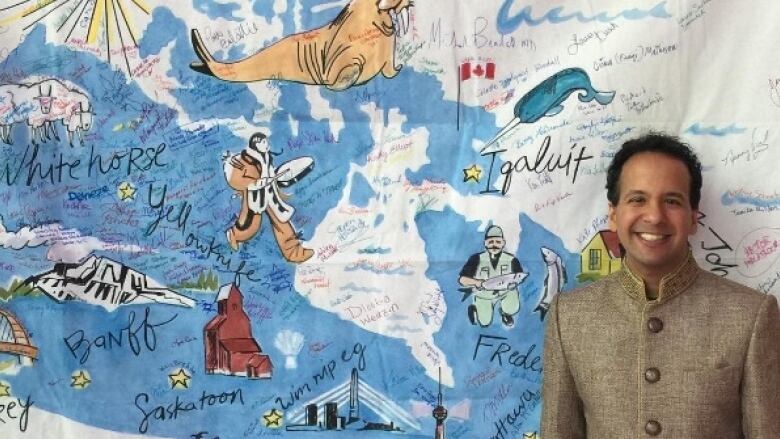'Applause and words of appreciation are not enough': Why Canada needs action on inclusion
Better hiring practices, media inclusion, leadership roles needed

It was 1995 and I was 14 years old.
Wearing my bright orange kurta from India, I approached the stage of my Regina elementary school talent show, after two classmates had just finished their air band performance of the Alanis Morissette classic "Too Hot" to the rapturous applause of our classmates.
Unlike this popular song, I performed a bhajan (song) while playing my harmonium, an Indian instrument.
I was one of only five children of colour in my school and, that day, I loudly and proudly sang my heart out in Sanskrit and my classmates cheered me on.
This was not the first time, where dressed in my traditional finest, I sang, celebrated, or spoke about my culture, religion, language, traditions, or ancestry. At school. At community events. At Mosaic. At multi-faith forums. At marches.
In many ways, proudly wearing, displaying, and explaining my culture became a way for me to not only celebrate its distinct beauty but to show others the many ways in which we are all connected.
And it was not just limited to my culture. I have spoken about my disability. I have shared my personal story to raise awareness on racism, discrimination, and homophobia.
I am not alone.
Throughout the years, I continue to see vestiges of this approach threaded through conversations on diversity and inclusion: the notion that through highlighting and sharing our traditions, stories, struggles, and heartache, members of marginalized communities can dispel stereotypes, engender deep connection, and inspire meaningful change.
While critically important to encouraging dialogue and mutual respect, in my view, this approach one of building awareness of the diversity in our country and the issues affecting specific groups is only the first step.
This first step undeniably places the burden on already marginalized communities to use our voices, experiences, history, culture and often vulnerably, our pain, challenges and anguish, to engender this awareness.
And let's be real: It is exhausting.
I have told my story and shared myself so many times. I need more. We need more. We need to move beyond the awareness of inclusion to actual action. In the workplace. On television. In leadership.
Our population tells the story of a diverse country.
According to Statistics Canada, 20 per cent of Canadians were born elsewhere and immigrated to Canada.
By 2036, nearly half of the population will be immigrants or children of immigrants.
Persons with disabilities account for 13.7 per cent of the adult population. Five percent of Canadians identify as LGBT and this number is growing as more people self-identify.
Women account for 50.4 per cent of the population and the Indigenous population grew 20 per cent between the 2006 and 2011 censuses.
However, despite these figures and their growth, we have not seen corresponding increases in the representation of these groups in employment, education, film/television, and leadership. In fact, while our demographics tell a story of diversity, our institutions continue to fall woefully behind in reflecting this reality.
We need to move beyond the awareness of inclusion to actual action.
We must be vigilant to ensure that our attempts at building awareness of diversity are not just for disconnected consumption and isolated enjoyment. Applause and words of appreciation are not enough.
We can no longer put our differences on display or share the most profoundly vulnerable parts of ourselves only to feel excluded from the discussions and decisions that affect our country and us. It simply hurts too much.
Do something more
The clarion call to action is to do something more through better hiring practices, substantive equal access to education, diverse promotion to leadership, and inclusion in media.
So, as we move towards the many Canada 150 celebrations, which attempt to highlight the communities, experiences, and histories that make our country, let us not forget that inclusion is not limited to an event, a hashtag, or a speech.
Inclusion must be alive and electric and through tangible action, made visible and viscerally real every single day in the big and small decisions that affect our country.
This would be the ultimate celebration.












_(720p).jpg)


 OFFICIAL HD MUSIC VIDEO.jpg)
.jpg)



























































































